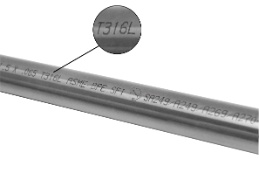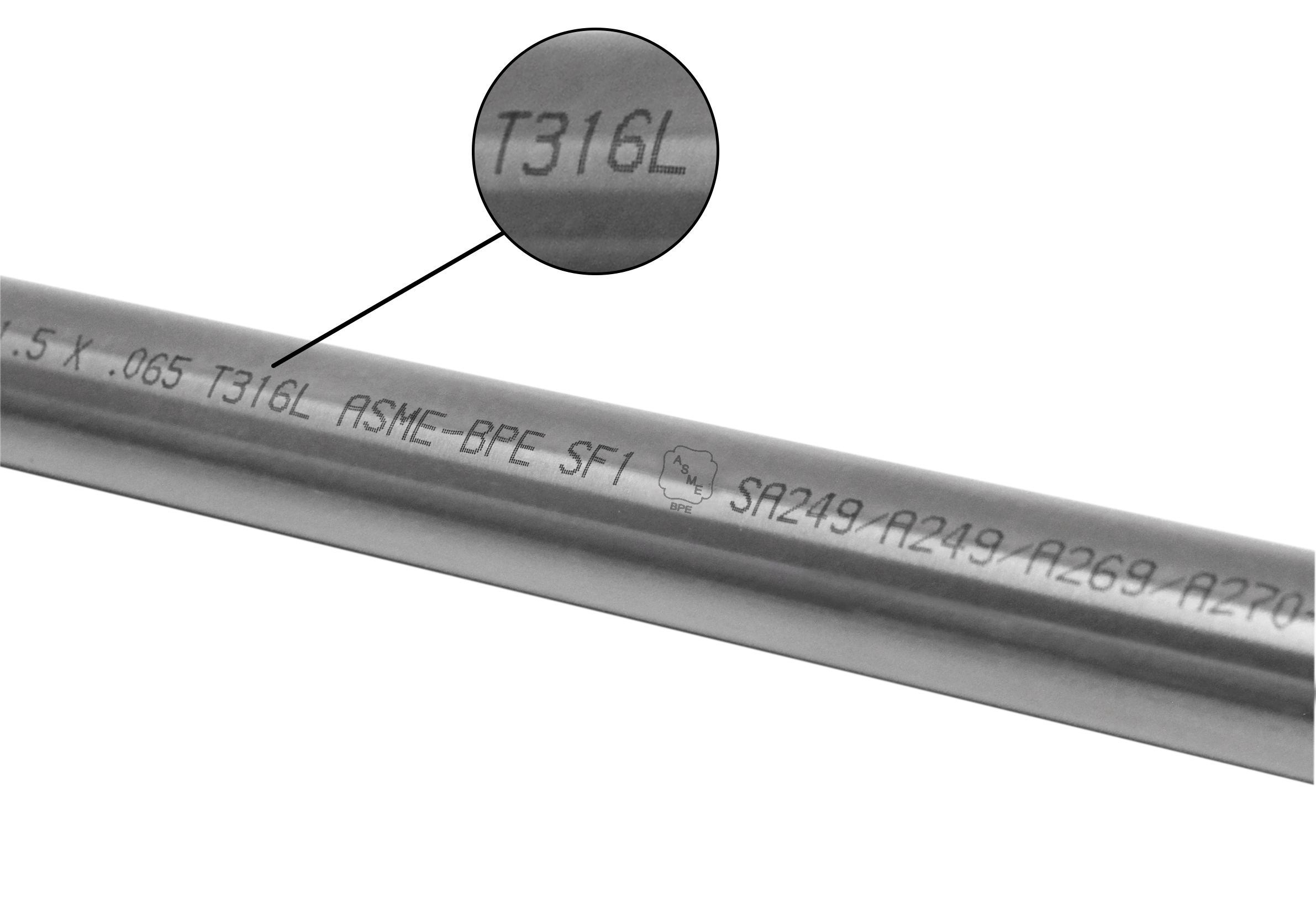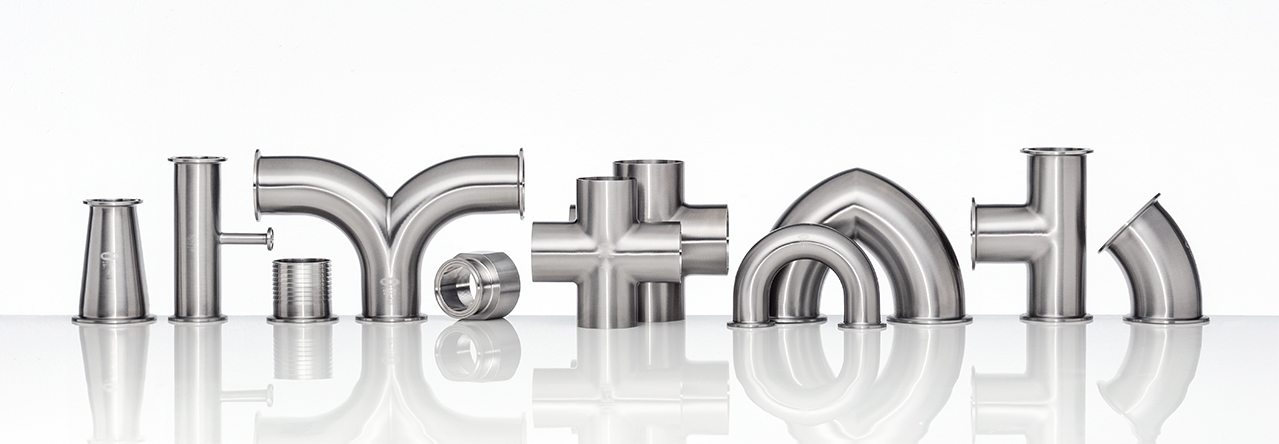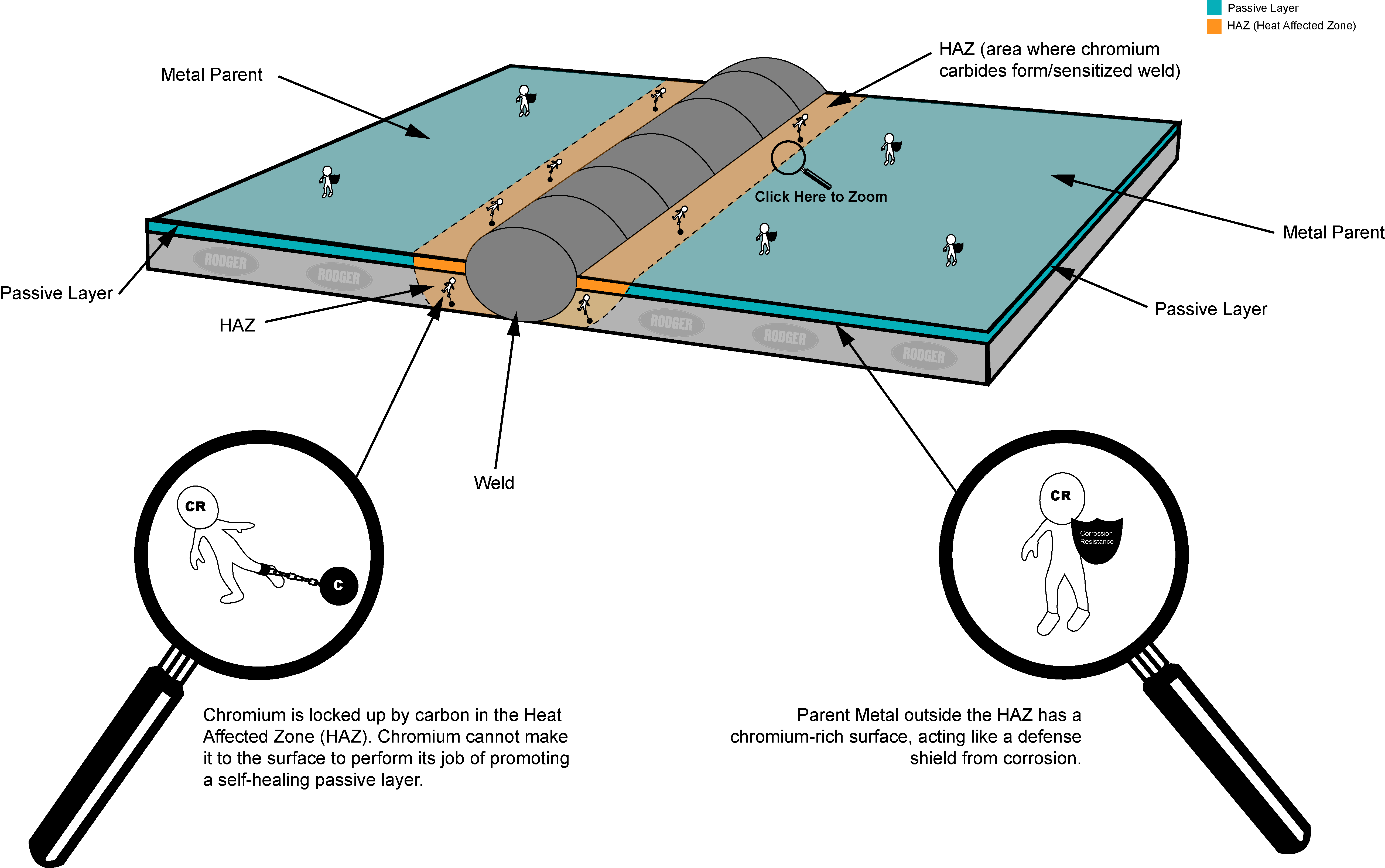
What does the “L” at the end of 300 series stainless steels such as T304L or T316L mean?

The ‘’L’’ stands for low carbon content that is ≤0.03%. The use of L-grade is important when repair or joint welds are made that will not be annealed. The reason why is that as the two parent metals are being fused together in welding, the carbon and chromium react and join to form chromium-carbide. This reaction is known as ‘’sensitization’’ and it occurs when temperatures reach between 425°C (800°F) - 900°C (1650°F) in the heat affected zone (HAZ) adjacent to the weld (HAZ-see fig. 1).
Figure 1
Because the carbon has latched onto the chromium to form chromium carbide in the HAZ, there is insufficient chromium in this area to form the chromium oxide layer needed for corrosion resistance, also known as the passive layer. The result is that rust (corrosion) can form in the heat affected zone next to the weld.
By using L-grade stainless steel with low carbon content, the formation of chromium carbide in the HAZ is reduced. This in turn, reduces the risk of corrosion beside the weld.
The information contained within this article is provided as general industry information and should not be relied upon to make definitive calculations or decisions for process engineering related projects. Users should always consult a materials specialist, engineer or industry expert.


